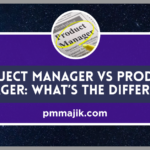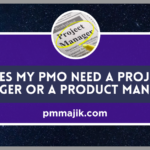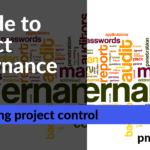If you were to conduct a survey of PMO professionals, the issue of project managers not adhering to governance and processes would be one of the common findings. Many PMO practitioners would claim that this non adherence results in many wasted hours of chasing the project managers and a number of confrontations.
Before looking at techniques to address this, it is worth understanding why the project manager does not comply.
Understanding
It can be as simple that the project manager was not aware or understand what was expected, this is particularly true for new joiners or contract / consultant resources who may not be aware of the organisations methodology and approach to change delivery.
Communication of Governance Processes
Now at this point a number of you are thinking “but I did tell them what was required”. I am sure this is true. However, take a moment to think how it was communicated.
- Did you issue an e-mail to all the project managers with a very large Powerpoint attached within which, slide 73 explained the reporting cycle?
- Did you meet the project and then only make a vague passing comment on what was required without being specific?
- Did you check to see that the message had been received and understood – classic send, receive, check communication process?
Too Busy
By the very nature of the job, project managers are very busy. Their number one priority is to deliver the project to the agreed business case. This means that they need to jump on every emerging risk and issue early. So they have received the message and know what is expected. However, they often sacrifice adherence to governance as it is deemed (wrongly) not as important.
Don’t Want to Comply
 There are a small group of project managers who have received the message, understand what is required, have the time BUT still not adhere. The reason being that they see PMO governance as an unnecessary overhead that adds no value. Or the PMO does not know what they are doing and they decide that they will use their own approach and governance process.
There are a small group of project managers who have received the message, understand what is required, have the time BUT still not adhere. The reason being that they see PMO governance as an unnecessary overhead that adds no value. Or the PMO does not know what they are doing and they decide that they will use their own approach and governance process.
So what can you do to address these common themes in order to be successful?
Understanding
The first step is to make sure that you and your team understand the governance process and test to make sure that the process is required and adds value. If it does not revise or eliminate. By doing this you and your team will be confident in articulating the key points and more importantly why they are required.
Communication
Spend time building a communication plan of the governance processes. This should include the target of audience, method of communication and material. If you do have large documents that contain all the information, spend time producing brief summary packs that make it easy to understand the key aspects including what you expect the project manager to do by when. They still should be given the large pack. However, this should be for them to delve into for targeted information that they are after.
The ideal method of delivery is to sit down and meet face to face. This will allow you to deliver the key messages and check that they have been understood. The project manager will then be able to ask questions for clarification.
If you have no other option but to deliver the guidance by e-mail, take time to make sure the e-mail is clear and to the point. Ensure that there is clear direction on where they will find the important information and what is expected from them. When using e-mail I like to include an ‘Action Required’ heading so it is clear.
Make sure that you close the e-mail with how they can get further information and assistance. You should also follow up after sending the e-mail with each project manager to make sure they have received the e-mail, ask if they have any questions and confirm they understand what is expected. Don’t think just because you have sent the e-mail and, perhaps, see a read receipt, that they will obey.
Another reason for meeting or talking to the project manager is that you can ask them if they see any challenges in complying / completing the required tasks in the required time frame. Then, if they say they have challenges, you can deal with them early.
How to Address – Too Busy
The project manager may say quite fairly they are too busy. You should respect this statement (after understanding the reason for them being too busy in a nice way). Then, remind them that the governance process is important to the organisation and will help them with their delivery and ask them for suggestions how they would like to address the governance requirements.
Make sure you take whatever steps you can to make this easy for them. So if you and the PMO team can put some prep work in for the project manager, offer to do this as it will demonstrate you want to help. This will make them more likely to make the time going forward. Word of warning, while you can offer support, DO NOT take ownership – you may be held responsible when something does not go to plan!
How to Address – Do Not Want to Comply
Always the hardest and, unfortunately, can not always be solved. Take all the steps detailed and as described within Too Busy, offer as much support as you can. If the project manager still insists on ignoring the requests, you can take the subtle approach of publishing reports without the updates. Senior management will soon ask where the updates are. Likewise, peer pressure may persuade the right behaviour. For this to work you need over 80% of the other project managers to be providing their updates.
If all of this fails you will need to escalate. This is why it is important that you have a strong PMO sponsor.
Summary
Non adherence to PMO governance processes will be a challenge that will always be with the PMO. The steps above will help to try to reduce the time and effort to gain adherence.






